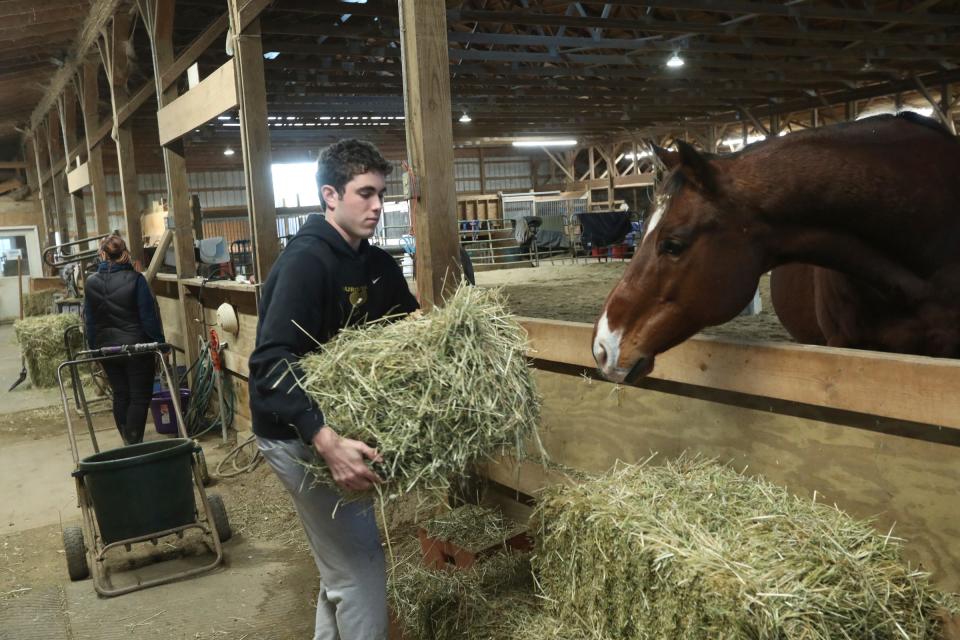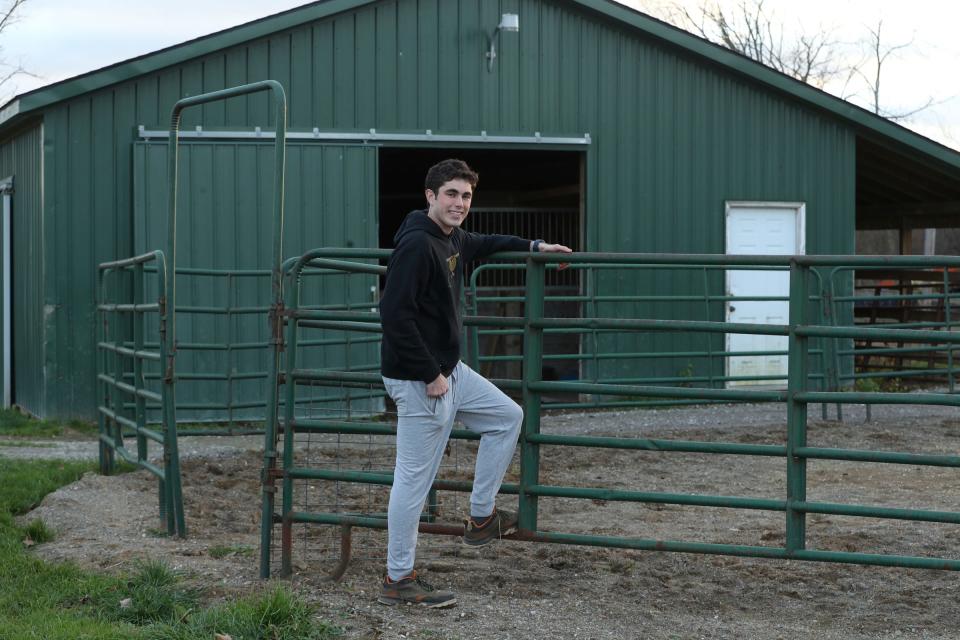Gratitude isn't just a seasonal trend: It's a powerful mental health tool for kids
Thanksgiving starts a seasonal push for gratitude that seems to extend through the winter holidays and then abruptly enter hibernation until the leaves turn color again. This time of year brings ample opportunities to give meaningfully. But it also presents social grenades in the form of ungrateful kiddos whose disappointed looks take the joy out of gift-giving, or whose incessant demands for certain products leave loved ones wondering where the sense of entitlement originated and how it can be quashed.
We all want to raise children who express gratitude for all they have and all they receive. Whether it’s the hottest toy of the season or a hot meal at dinnertime, parents and caregivers know how important it is for kids to understand that they are getting something for which they should be thankful.
It turns out that gratitude is so much more important than simple politeness. Research shows us that gratitude is actually one of the most important tools children can develop to protect their mental health and ensure their social-emotional well-being.
The surprising power of gratitude
Experts explain gratitude as being aware of and thankful for good things that happen. It’s a mindset that offers the double benefit of being protective against negative things like depression, stress and anxiety, and also boosting positive things, like feelings of connectedness and community.
It can positively influence social skills and even academic achievement. “Research consistently shows that children, regardless of the age, who are more naturally prone to feeling grateful for things — those kids tend to have better outcomes,” said Hasti Raveau, a licensed clinical psychologist and the founder and director of Mala Child and Family Institute with offices in Ann Arbor, Farmington Hills and Plymouth.

Children who score higher on gratitude tests tend to also demonstrate higher levels of overall well-being. In one study, older children whose parents described them as grateful were also happy.
The brain science behind gratitude
If you looked at someone’s brain as they were expressing gratitude — as researchers have done — you’d see activity in areas of the brain associated with setting context or giving meaning to a situation. So gratitude could play a role in changing the way we see the world around us, according to Anne-Kathrin Eiselt, applied behavioral science director with Teladoc Health and a Ph.D. psychologist with a background in cognitive neuroscience.
Perspective also activates brain areas involved in positive emotions, which can motivate us to do things we enjoy, which in turn can make us feel more grateful — a reinforcing feedback loop.

At the same time, the brain circuits activated during gratitude suppress our defensive and fear-based brain circuits, which is likely why we feel reduced stress and anxiety.
In children, the brain area activated during expressions of gratitude is the prefrontal cortex: the least-developed region in young people and, according to Eiselt, one that is crucial for emotion regulation, impulse control, moral thinking, empathy and problem-solving.
“Through practicing gratitude through naming and talking about emotions or storytelling with perspective taking, it could all help spill over into other behaviors and skills,” Eiselt said.
Giving back as a gratitude practice
John Verga is like a lot of his fellow seniors at Huron High School in Ann Arbor: stressed out about tests and all his school obligations. But every weekend he volunteers at Starry Skies, an equine rescue near his house, mucking out stalls, grooming and feeding the horses, and hanging out with other volunteers.

It’s in those moments when John feels like he’s helping that he also feels the most gratitude.
That makes perfect sense to Raveau. “At the end of the day, what matters in life is that we are feeling a sense of connection and belonging,” said Raveau. Gratitude helps us feel like we are a part of something bigger — whether that’s a family, a community or a higher power — so it helps us feel connected to that thing.
John lived in China, Mexico, Brazil and South Africa — places where human need and poverty created a powerful sense of perspective before he moved to Michigan as a teenager. Nevertheless, he says it’s hard to just walk around feeling gratitude. It’s a lot easier when you’re helping and having fun.

More: Do these 7 things to make your college application stand out
When he’s doing that at Starry Skies, John notices his stress level goes down. “You kind of realize how small your problems are … you kind of put it in a more global perspective,” he said.
Gratitude can be cultivated and practiced
Some kids are more rigid in their thinking, some are more anxious and likely to get stuck in a negative mindset. It doesn’t mean they can’t learn gratitude.
In fact, Raveau said it can be even more important to work with kids like that to help shift their mindset into one of abundance and gratitude, since it serves as a positive coping mechanism.
Eiselt said children whose parents explicitly model and discuss gratitude with them are more likely to have increased gratitude. But it can’t be forced; the feeling of thankfulness has to be genuine.
“Whatever comes naturally and feels good should be the one that is encouraged,” she said. “Slowing down, being more mindful, having more of those positive interactions and taking perspective and talking about the good things is what we generally encourage.”
How to instill gratitude in your children
Kids and families are all different. But there are plenty of things to test out.
Around the dinner table at night, ask children what their favorite part of the day was, and what they were grateful for. Older kids can write down a short list each day or journal about something they appreciated — maybe even write thank you notes to people who are special to them.
Gratitude-focused products are hitting the market, from gratitude journals to gratitude card decks, meditations and gratitude trees where family members can write things they’re thankful for on little paper “leaves.”
Brittany Macken instills gratitude in her family, which includes 5-year-old son Sawyer, with a little help from technology. She and her husband programmed Alexa to remind them every morning at breakfast time to share out ‘Gs,’ as they refer to them: three things they’re grateful for and one goal for the day.
“It has at least given us an opportunity to talk about gratitude,” says Macken, who encourages Sawyer to reflect on his warm house and the food in his belly. “And I think also in having those conversations we are also reminded of those small things that don't always make our own lists.”
Notice, think, feel, do — and tell
To help a child train their gratitude muscle, Raveau also suggests a practice called notice, think, feel, do.
When someone gives your child something, encourage them to notice things about it, like the fact that it’s their favorite color, or that they mentioned how much they liked that kind of snack the other day. Then have them think about why they received it, and how it makes them feel. Finally, prompt them to express how they feel in a way that feels right to them, whether that takes the form of a hug, a video or a drawing.
For younger children, reading or telling stories about being grateful, putting things in perspective or doing kind things can have surprisingly strong results.
“Research shows … that listening to stories of others who are truly thankful or experiencing gratitude can have the same benefits if not maybe even more than experiencing it themselves,” Eiselt said.
For families just starting to build a gratitude practice with their children, Raveau said it all starts with the connection between caregiver and child. “Forming gratitude in kids, the foundation of it is having a really safe relationship with your caregivers where they understand you and they are connected to you emotionally and have a lot of empathy for you,” she said.
Make it a family value to treat each other well and with compassion, not because you want your kids to be successful but because it’s the right way to treat human beings, Raveau said.
Jennifer Brookland covers child welfare for the Detroit Free Press in partnership with Report for America. Make a tax-deductible contribution to support her work at bit.ly/freepRFA. Reach her at jbrookland@freepress.com.
This article originally appeared on Detroit Free Press: How to instill gratitude in your child for mental health, wellbeing

